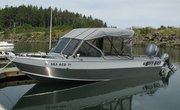MotorGuide is a leading manufacturer of trolling motors and motor accessories. Motors are either hand or foot operated, but a select few models operate through a wireless system. Troubleshooting issues with any model requires a thorough investigation of the electrical and physical components to locate the cause and seek solutions.
Electrical System
Start by inspecting your electrical system to ensure power is reaching the motor. Check the connections at the battery terminals and the trolling motor. Clean battery posts with a wire brush when you discover corrosion and grime. Check the voltage on the battery, and replace if the battery will not hold a full charge. Secure loose plugs, as well. Blown fuses occur with power surges, especially from a bad battery. Check your fuses after partial or complete power loss. Lastly, pull the cap off your motor and check the wires. Melting is an obvious sign of overload and damage. Remove and replace all damaged wiring with marine-grade wire, or hire a professional to make the repairs and identify the source of surging power.
Warnings
Always disconnect the battery when working with live wires and electrical components. Working with live electricity, especially near water, is extremely hazardous.
Extending Battery Life
Trolling motors are typically paired with deep-cycle marine batteries. Draining the battery below 50 percent will shorten the lifespan and cause failure sooner rather than later. Get the most out of your battery by charging regularly and keeping the charge above 50 percent.
Rough Performance and Reduced or Lost Power
Tilt the motor to expose the prop and inspect for damage or interference. Remove any foreign objects to prevent binding. Algae, vines, trash and fishing line will bind the prop and cause power loss. The propeller should spin easily. Wobbling and rough running are often caused by worn bearings. This causes wobbles and resistance in older motors. You must remove the propeller to replace bearing and bushing parts.
Bolts and Screws
Wobbling and shaking issues are also often a result of loose bolts and screws. Run through your clamp connections, and inspect all exterior bolts and screws. Tighten everything down to secure plastic coverings, the prop and the component connections. Simple, but it helps.
Cleaning the Motor
Did you run shallow through a mudflat or silt-heavy zone? Give your motor a thorough cleaning with soap and water to break up sediment and prevent binding. A moderate pressure hose run through the cracks and prop area is also effective.
References
Tips
- You can find your nearest MotorGuide service center using the link in the Resources section below.
Warnings
- Make sure the motor is off before you touch the propeller.
Writer Bio
Zach Lazzari is a freelance outdoor writer specializing in hunting, fly fishing and the general outdoors. He guided fly fishing trips for 10 years in Colorado, Alaska, Montana and Patagonia-Chile. Zach lives in Montana and splits time between the river and keyboard.


